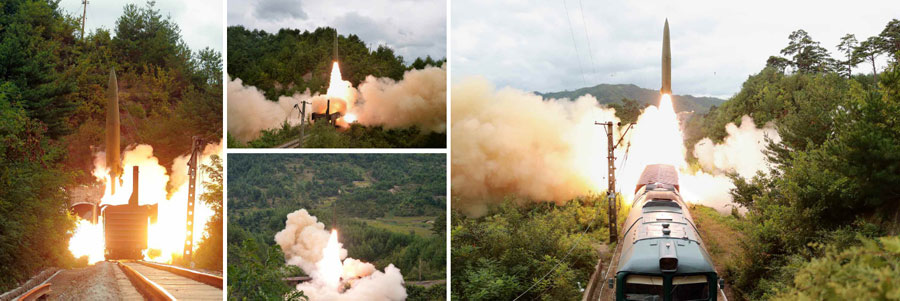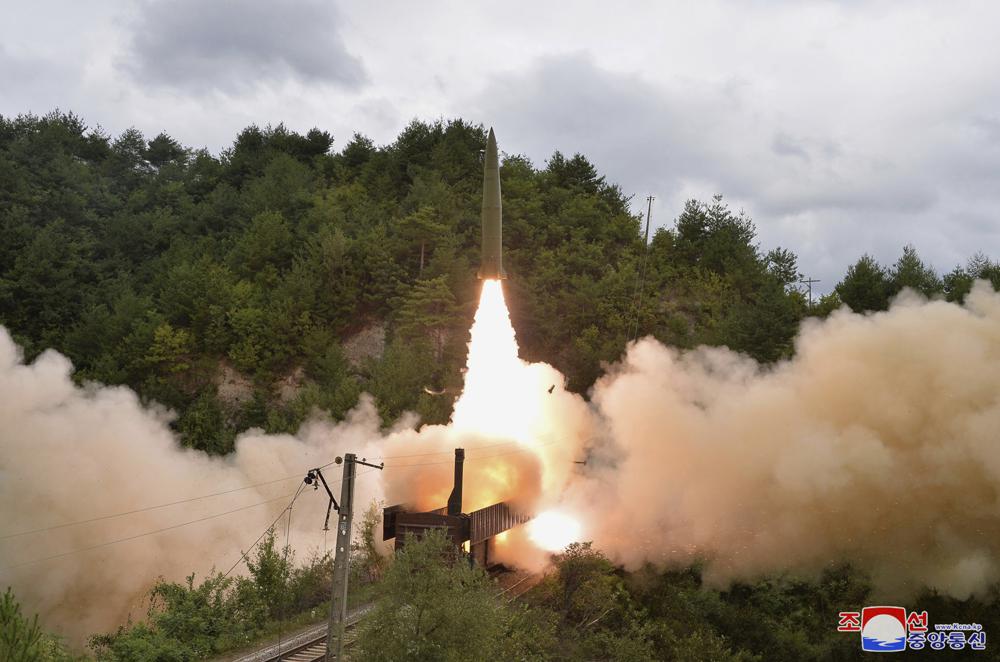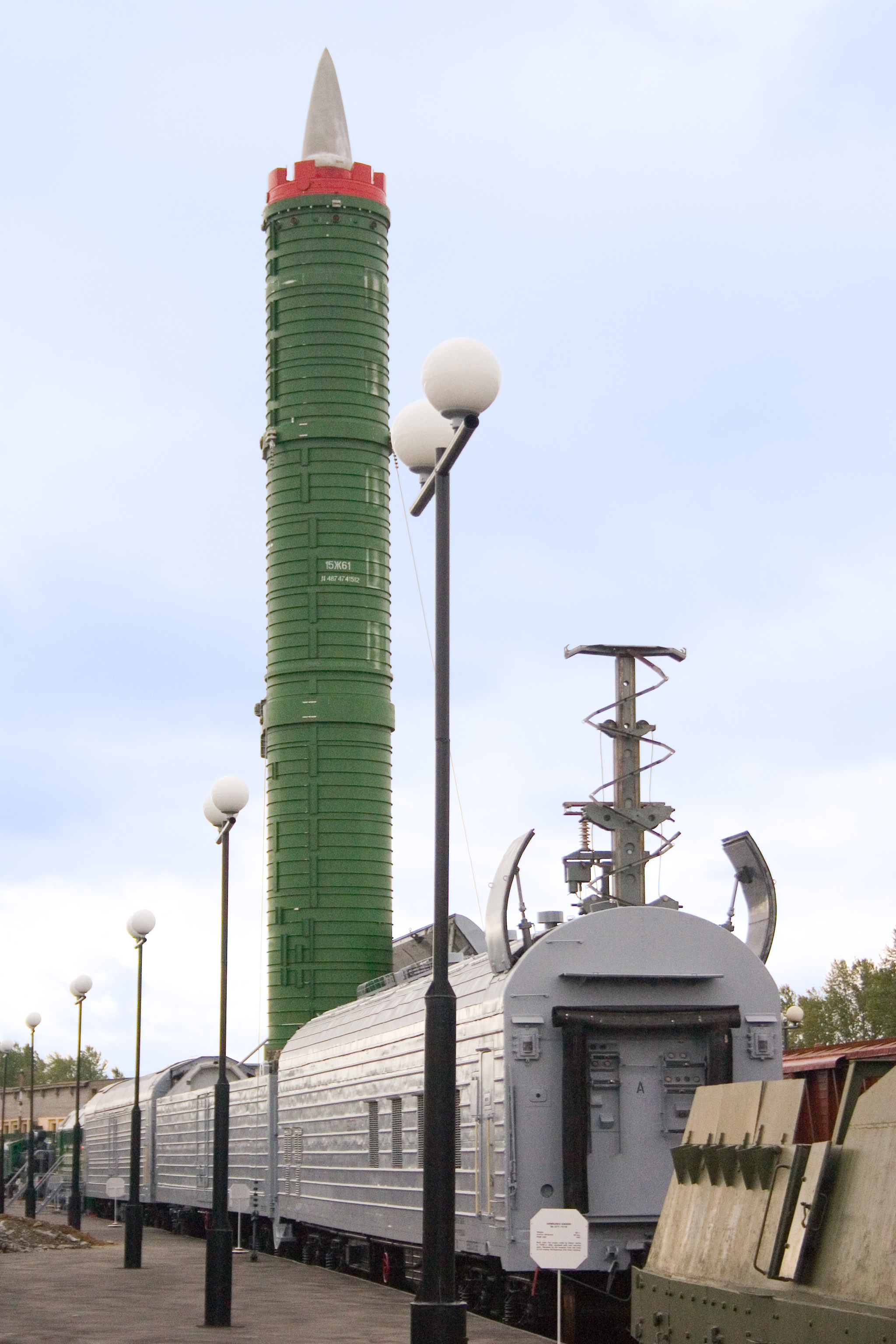Ballistic missiles are usually launched from land, air, sea, and even undersea platforms. However, during the Cold War period, the US had floated the idea of rail-mobile inter-continental ballistic missiles (ICBMs).
US ‘Snatches’ Colossal Submarine Deal From France; Can Washington Lure India With Another ‘Super Offer’?
In 1986, then-US President Ronald Reagan had given his approval to develop a rail system to reduce the vulnerability of the strategic missile force.
“To increase the survivability of this force, 50 Peacekeepers would be deployed in existing Minuteman silos and 50 more would be mounted on 25 USAF trains, two per train,” according to US Air Force archival records.
“Each train would consist of two locomotives, two security cars, two missile launch cars housing the missiles, one launch control car, one fuel car, and one maintenance car.
Each launch car carried one Peacekeeper ICBM, in a launch tube that could be elevated to fire the missile from the bed of the car,” a statement posted on the website of the National Museum of the United States Air Force read.

The trains would be located in shelters located on USAF Strategic Air Command bases throughout the country, with the missiles on continuous strategic alert. When necessary, the trains could be dispersed onto the nation’s rail network, making it extremely difficult for an enemy to target and destroy them, it said.
However, the development of this rail garrison deployment system was terminated in 1991 as Cold War tensions eased.
Ballistic Missile On Tracks
Decades later, one of America’s bitter rivals, North Korea, has tested this rather unique missile launching system.
US Air Force’s ‘Flying Machine’ Worth A Whopping Two Billion Dollars Crash-Lands On Home Turf
According to reports, a pair of ballistic missiles was test-fired from a railcar-based missile launching system. This missile launcher is believed to be a cheaper way to enable the fielding of additional ICBMs, which could also significantly reduce vulnerability to counter-attacks from adversaries.

This test-firing of “rail-launched ballistic missiles” was conducted by the North Korean military’s Railway Mobile Missile Regiment on September 15. According to the state media, it was the first time that the communist country demonstrated what it referred to as the “railway mobile missile system”.
The missiles reportedly flew up to 500 miles (800 kilometers) from their launch point before they fell into the sea off the eastern coastline of the country. This range indicates that these missiles are capable of hitting the whole of South Korea and some parts of Japan.
According to the images of the test firing, the launcher appeared to be placed inside a modified boxcar. The missile is attached to the launcher arm, which attains the launch position as soon as the roof opens. Doors on the sides also open letting the blast from the missile’s rocket motors vent outside.

It is not clear which missile type was used in this test, but experts noted that the missiles in the photographs appeared to be KN-23.
From its external appearance, this missile is very similar to Russia’s Iskander-M short-range ballistic missile. North Korea had also reportedly conducted tests of a scaled-up KN-23 derivative.
America’s ‘White Elephant’: Why F-35 Stealth Jets Are USAF’s ‘Achilles Heel’ Amid Growing Chinese Threats
A rail-based missile launching system shows that North Korea is diversifying its missile launch options. This already includes various vehicles and ground launch pads and may also include submarines in the future.
sharp highres image confirm my thought of doors on side allow venting.. pic.twitter.com/f5jZPfCeSm
— Nathan J Hunt (@ISNJH) September 16, 2021
Even though firing a missile from a train could provide increased mobility, some experts have criticized the move by saying that North Korea’s simple rail networks running through its relatively small territory would be quickly destroyed by enemies during a crisis.
“Our military assesses that North Korea is continuously developing various mobile launch equipment”, Col. Kim Jun-rak, a spokesman for South Korea’s Joint Chiefs of Staff, told Associated Press. He added that South Korea and the US are carefully examining the launches conducted by North Korea.
Russia Deployed Similar System
It’s not just America, but its Cold War rival Soviet Union had also deployed rail-mobile ICBMs. Called RT-23 Molodets, these solid-fuelled ICBMs were developed between 1987 and 1991.
The missile was part of a three-car autonomous launching module. The ICBMs were decommissioned by 2005 under provisions of the Strategic Arms Reduction Treaty-II between Washington and Moscow in 1993.

Russia also planned to reintroduce this launching capability, with a system called Barguzin. However, this project was shelved in order to focus on the development of its Avangard hypersonic missile.
DECODED: Why Dassault (Rafale) Aviation Surrendered A Multi-Billion Dollar Deal To US Fighter Jets Even Before Evaluation
Meanwhile, North Korea revealed yet another missile system just days after it conducted tests of its new ground-based long-range cruise missile. South Korea had shared details about the tests of four of its own missiles, including a “high-power” ballistic missile along with a long-range cruise missile.
These developments further highlight the ongoing and growing missile race in the Korean peninsula.
- Jayanta Kalita is the editor of he EurAsian Times . A former Associate Editor at Hindustan Times, Jayanta has worked for ThePrint, The Times of India, Mail Today among other media outlets. He can be reached at editor@eurasiantimes.com
- Follow EurAsian Times on Google News
More @ EurAsian Times
- US Experiments With ‘Revolutionary Air Combat Training’ For Fighter Pilots To Dogfight Russian, Chinese Jets
- Despite J-20 Stealth Jet, Why Is China Keen To Acquire Another Stealth Fighter – Russian Su-57 To Its Arsenal?




